IMPERIALISM CHALLENGES CHINA
NATO's Indo-Pacific policy riddled with challengesDW
Western allies are waking up to the threat on NATO's borders and the increased ties between Russia and China.
But the security alliance's goal to work more closely with the Indo-Pacific region still has a long way to go.
Russia and China have been conducting joint naval drills and war games in recent weeks, in a show of strength and camaraderie for the regional and Western audience.
Several experts told DW that Moscow's intentions were to distract the United States from Europe and weaken the NATO alliance, while China intended to spook regional adversaries and learn lessons from Russia's war experience.
"Russia wants the US to focus more on the Indo-Pacific in the hope that it will reduce military deployment and its support to Europe," said Ying-Yu Lin, a military expert at Tamkang University in Taiwan.
At least 15 countries were invited to observe the drills, but China was the key partner.
"We pay special attention to strengthening military cooperation with friendly states," Russian President Vladimir Putin said at the launch of the exercises in early September, as if brandishing Moscow's defense cooperation with Beijing as a counterweight to the Western security alliance.
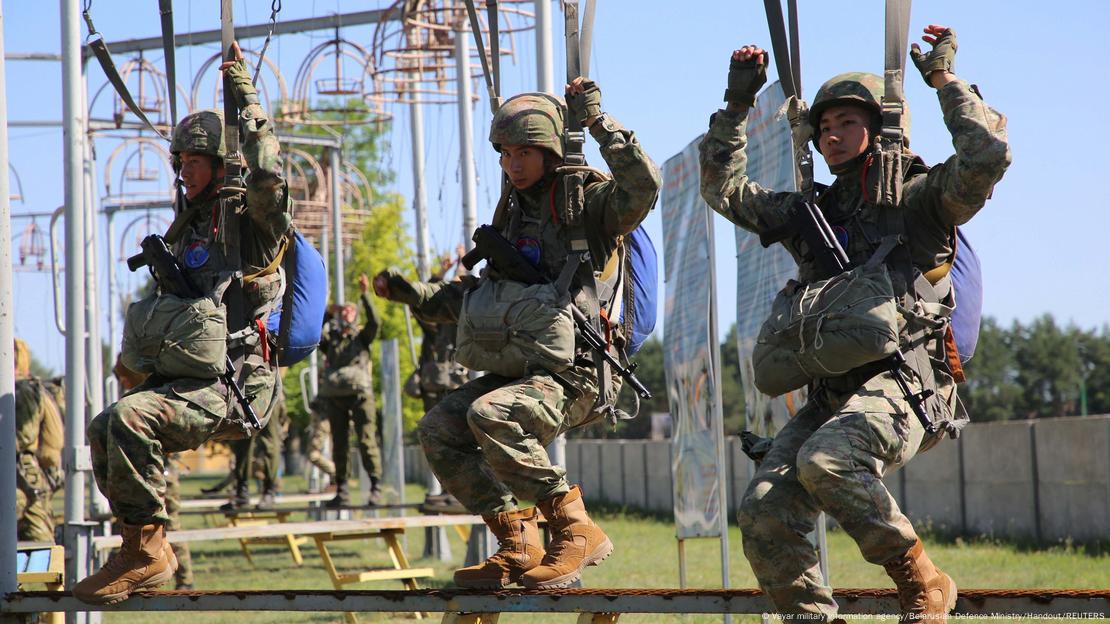
Chinese and Belarusian soldiers staged joint exercises on NATO's eastern flank in early JulyImage: Vayar military information agency/Belarusian Defence Ministry/Handout/REUTERS
But these exercises, Russia's largest in 30 years, aren't the first with China this year. In July, Russian and Chinese bombers flew together for the first time in international airspace off the US coast of Alaska, while in Europe, Chinese soldiers staged joint anti-terrorism exercises in Belarus, on NATO's eastern flank — just kilometers away from the border with Poland.
Does NATO want to expand to Asia?
China's increased presence on NATO's outer edges may be, in part, in response to NATO plans to increase its cooperation with key regional partners Japan, South Korea, Australia and New Zealand, also known as the IP4.
NATO has said developments in the Indo-Pacific region "can directly affect Euro-Atlantic security," and the idea of collaborating with the partners is to "enhance their mutual situational awareness of security developments" in the two regions, in part due to the growing influence of China, Russia, North Korea and Iran.
Outgoing NATO chief Jens Stoltenberg has publicly reprimanded China's alleged military support to Russia. NATO has described China as "a decisive enabler of Russia's war against Ukraine" for its "so-called 'no limits' partnership and its large-scale support for Russia's defense industrial base," which includes machine tools, microelectronics and other technology that allow it to make weapons.
Reacting to the IP4 cooperation plans in July, Lin Jian, a spokesman for the Chinese Foreign Ministry, accused NATO of "breaching its boundary, expanding its mandate, reaching beyond its defense zone and stoking confrontation."
But experts in Europe have said there is no appetite in NATO to expand its remit and offer actual security guarantees to eastern partners like Article 5 of the NATO treaty, which calls on every member state to provide mutual defense through military and political means if a member state is threatened by an external country.
"Diplomatically, there is an objective to maintain the status quo and not irritate China, as China has indicated multiple times that NATO cannot expand to the Indo-Pacific," said Sari Arho Havren, a specialist in China's foreign relations at the Royal United Services Institute think tank, based in Brussels.
Ian Lesser, who heads the Brussels office of the German Marshall Fund of the United States think tank, said there is currently no consensus on expanding the geographical area of the alliance.
"NATO is very focused on what is in its areas of interests and responsibility," and is aiming for "obvious and easier" areas of cooperation that don't engage the question of geography and the key four Indo-Pacific partners.
"The easiest thing for NATO is to cooperate with the IP4 on more global concerns that do not have geographic boundaries, such as cybersecurity, information security, intelligence sharing and counterterrorism," he said.
However, the Western alliance faces a whole host of challenges, including how far it can go in provoking China, which happens to be the biggest trading partner of both its Asian partners and also of the European Union.
ADVERTISEMENT
What is NATO's strategy in the Indo-Pacific region?
Since Russia launched its full-scale invasion of Ukraine in early 2022, and amid growing cooperation between Moscow and Beijing, NATO has sought to highlight the importance of its Asian partners, particularly the IP4. The four countries attended the yearly NATO summit for the first time in 2022, months after Ukraine’s invasion, and have since become regulars.
NATO's strategy, while still in the nascent stage, has so far included sharing notes on Russia's aggression in Ukraine, the growing ties between Moscow and Beijing and China's stated sovereignty claims in the region and the security situation in the Korean Peninsula.
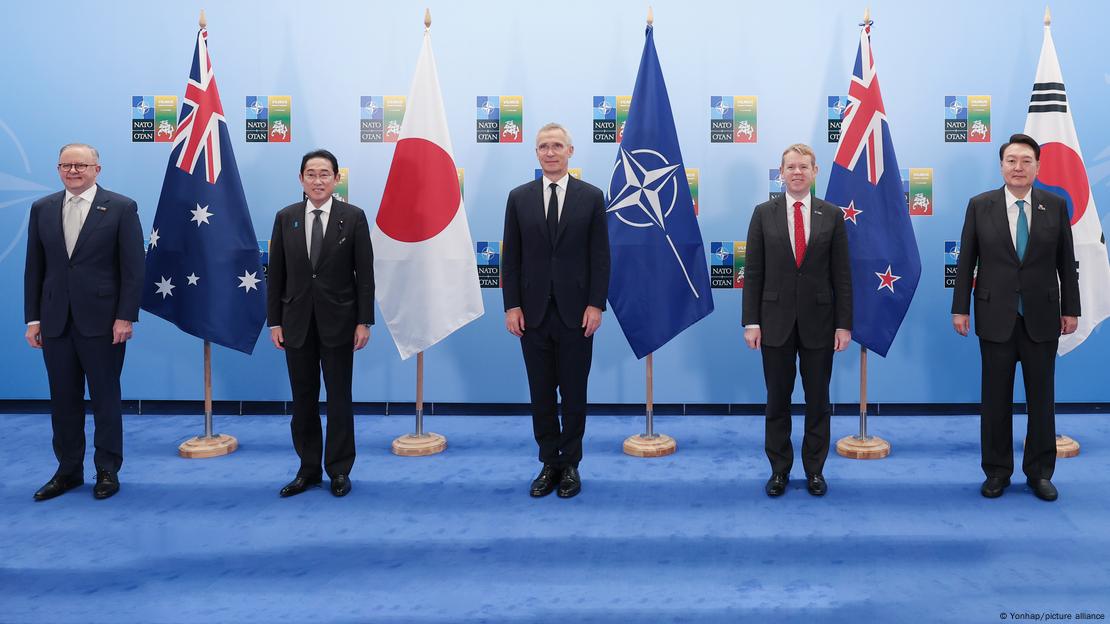
NATO has been keen to increase cooperation with Asian partners Japan, South Korea, Australia and New Zealand
Image: Yonhap/picture alliance
NATO member states are additionally concerned about Taiwan — a key supplier of semiconductor chips that power everything from electric vehicles to phones. The island state, which China claims as a breakaway province, is under constant threat as Beijing aims to reunite it with the mainland.
In July, White House national security adviser Jake Sullivan told a defense gathering that NATO allies will be launching four new projects with its Indo-Pacific partners focused on artificial intelligence, disinformation and cybersecurity, but also crucially on Ukraine. So far, NATO hasn't provided any further details.
"I would say that the deepening ties are a process, and NATO and IP4 coordination has already created a strong basis,'' said Arho Havren.
For instance, Japan and NATO are in the final stages of setting up a dedicated line for sharing highly confidential security information, while the European allies have come to appreciate the South Korean defense industry, particularly its ammunition production, which has been useful in indirectly supplying Ukraine.
Ying-Yu Lin said NATO's individual agreements with its Asian partners is due to the differences among them, and general cautious approach toward China in the region. "They don't agree on everything," he said.
Western allies remain cautious
That's also true for the Western allies, who are still deciding on the extent of their cooperation with their Asian partners. NATO member states have been careful in how far they'll go on their own. France, for instance, even vetoed the opening of a NATO liaison office in Tokyo last year, calling it a "big mistake."
NATO also wants to avoid stretching itself too thin, at a time there is a war on its eastern flank and it needs to bolster its own defenses.
"It is also a resource matter — European NATO allies cannot realistically expand their commitments to cover the Indo-Pacific," said Arho Havren, pointing out that many European nations still allocate less than recommended 2% of the national GDP on defense spending "and lack military capabilities even at home."
Edited by: Martin Kuebler



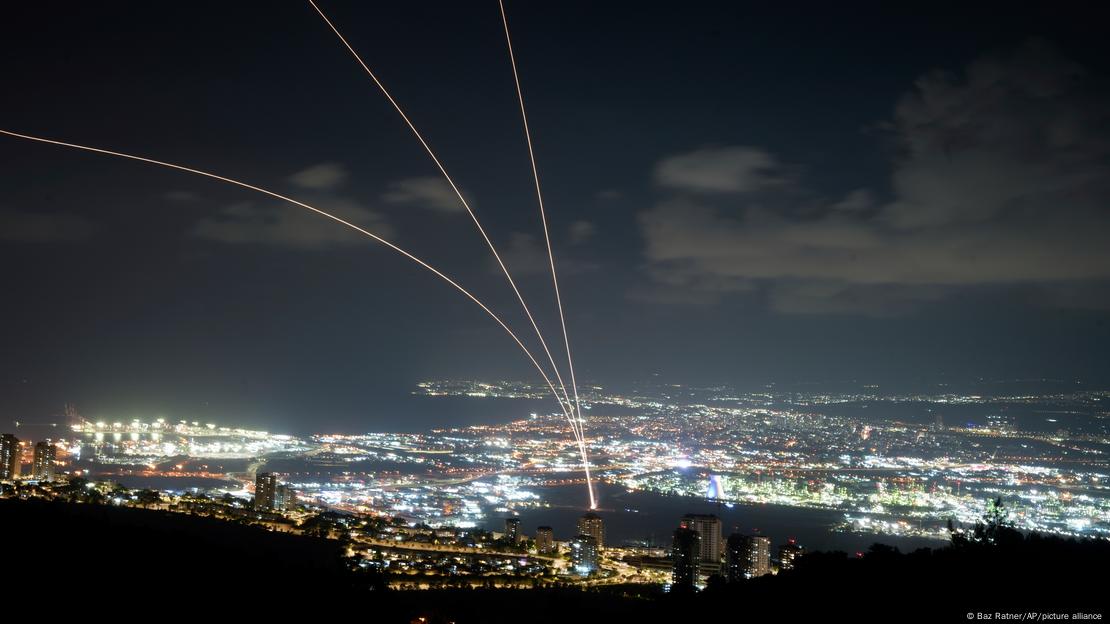
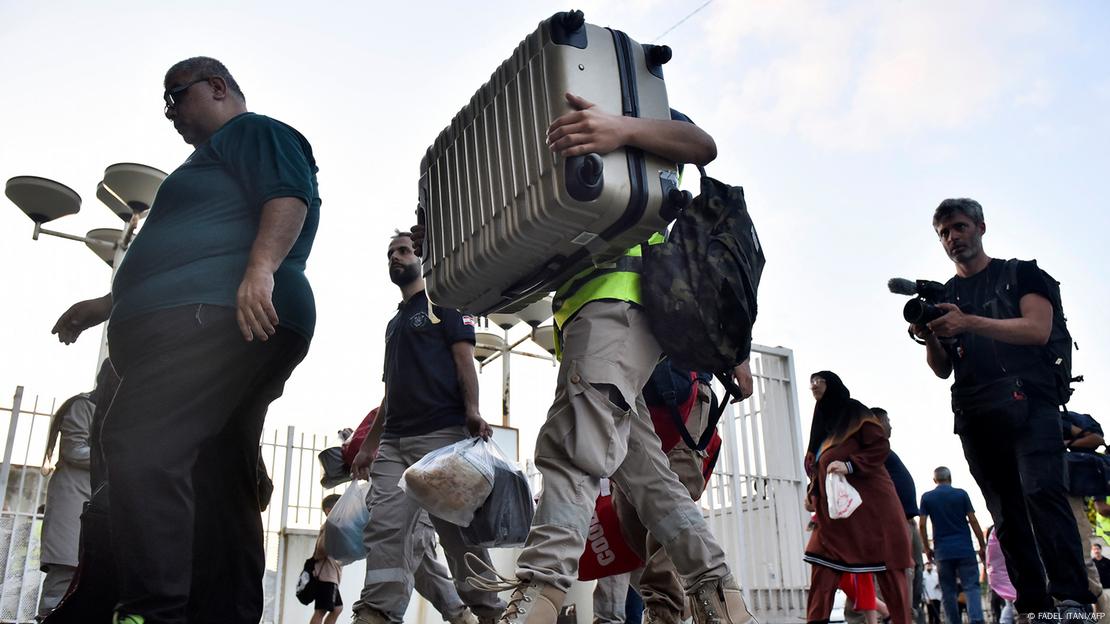
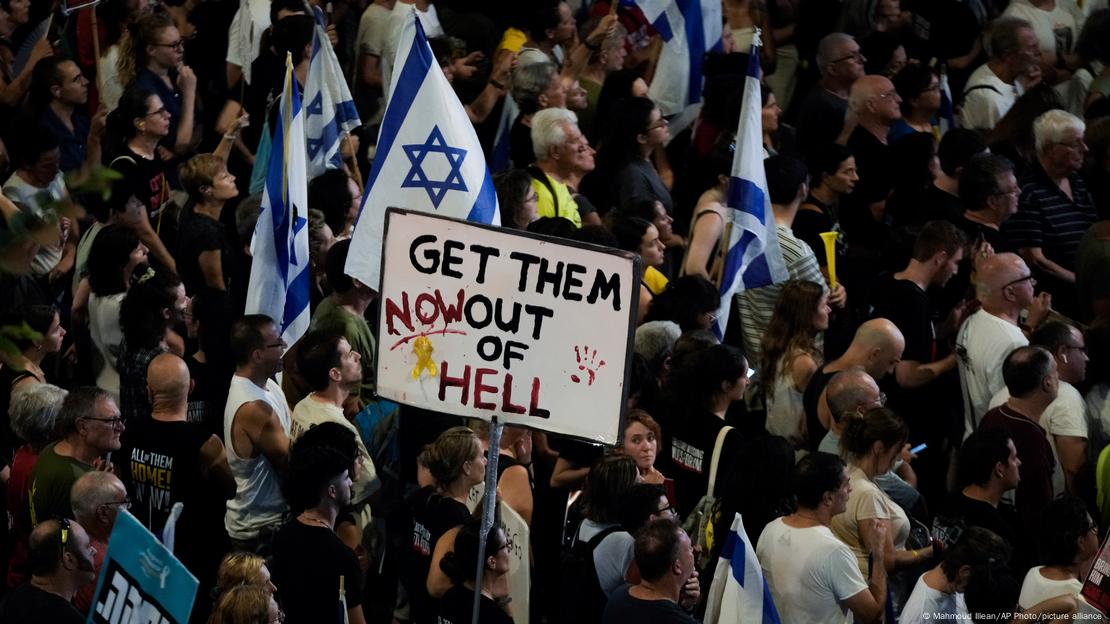

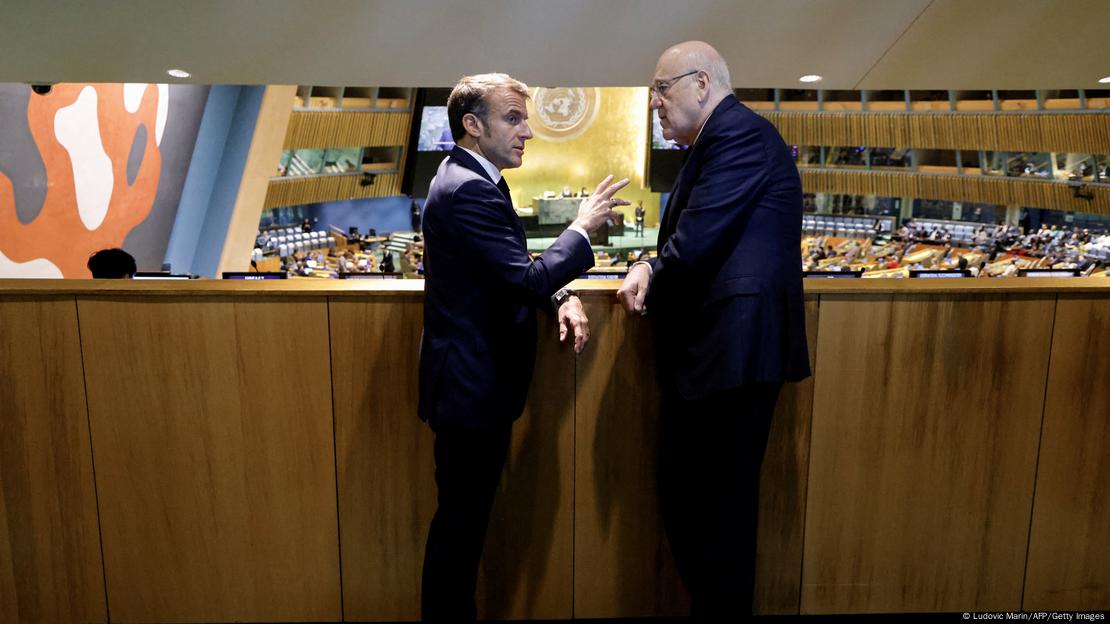
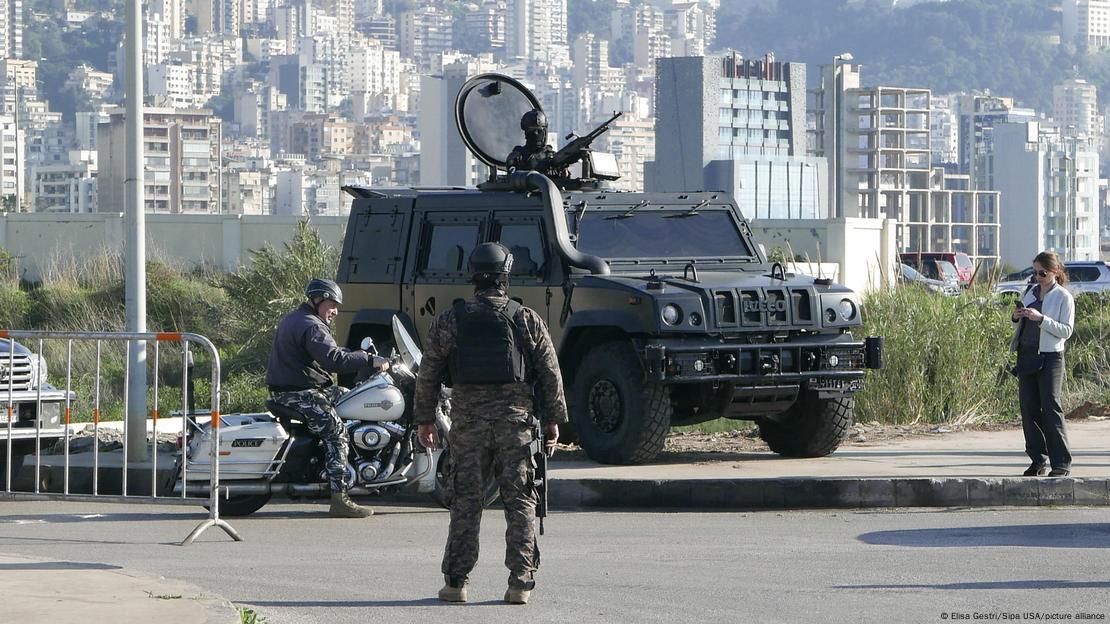








 01:50
01:50



